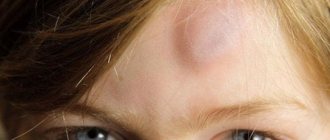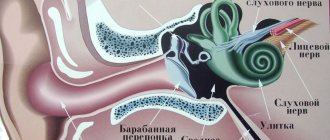Fainting (an outdated medical name is syncope) is a condition characterized by loss of consciousness and a drop in blood pressure. Metabolism slows down, sudden weakness and confusion occur. Fainting can last from a few seconds to tens of minutes.
In most cases, fainting is caused by a sudden decrease in metabolism in the brain, cerebral circulation is disrupted, and the brain stops receiving enough oxygen. Despite the fact that the brain does not function at full capacity, basic vital functions are reduced, but do not disappear completely. The patient is breathing, the heart is working.
Loss of consciousness can be caused by a variety of diseases. Sometimes fainting occurs due to a coincidence of circumstances - fatigue, stuffiness, prolonged fasting.
Before fainting, there is always a pre-fainting state, which can also last from a few seconds to several minutes. In some cases, it is enough for the patient to sit or lie down and relax the collar to avoid fainting.
Presyncope is characterized by the following symptoms:
- pulsation in temples;
- difficulty breathing - a subjective feeling of lack of oxygen;
- increased sweating;
- feeling of heat throughout the body;
- nausea, dizziness;
- tachycardia, feeling of rapid heartbeat;
- the appearance of dark spots before the eyes.
If the patient fails to sit down, he faints. In most cases, patients quickly come to their senses without outside help (although this does not mean that it does not need to be provided). Sometimes after fainting, other unpleasant symptoms are observed, for example, trembling and involuntary twitching of the limbs, the urge to urinate.
Causes of fainting
There are several physiological reasons that can lead to short-term loss of consciousness. Let's look at some of them.
- Disturbances in the functioning of the autonomic nervous system. This system is responsible for vascular tone. If there is a malfunction, it cannot correctly give commands to the vessels, they contract sharply, and loss of consciousness occurs. This is the main cause of neurogenic fainting - the most common fainting.
- Diseases of the cardiovascular system. They are the cause of the so-called. cardiogenic syncope. The heart does not work well enough, the blood vessels narrow, which leads to brain hypoxia.
- Atherosclerosis and vascular diseases. This also includes ischemic attacks and strokes.
- Increased intracranial pressure. It occurs as a consequence of certain diseases - a tumor, congenital hydrocephalus, or against the background of cerebral hemorrhage, as well as after head injuries.
- Decreased blood glucose, decreased oxygen concentration in tissues. Such conditions occur with diabetes, anemia, kidney and liver failure.
- As a result of a decrease in the volume of fluid circulating in the body. May be the result of bleeding, diarrhea, or other excess fluid loss.
- Poisoning by toxins: carbon monoxide, ethyl alcohol and others.
- As a result of various psychological and psychiatric diseases. For example, with neuroses and anxiety, a common symptom is hyperventilation. The body tries to control the oxygen content, which leads to vascular spasm. In such cases, patients need to learn breathing techniques.
There are other reasons: infectious diseases, traumatic brain injuries, epilepsy attacks. In each individual case, it is necessary to undergo an examination to find out why fainting occurs.
If this is an isolated case, and there were no pathologies during medical examinations before, there is no need to worry. But if fainting recurs, you need to visit a neurologist.
At CELT you can get advice from a neurologist.
- Initial consultation – 3,200
- Repeated consultation – 2,000
Make an appointment
Traditional methods
These traditional medicine recipes are recommended for people prone to fainting:
- Linden decoction. Take 2 tbsp. l. crushed linden flowers, pour 400 ml of hot water, boil for 10 minutes, leave until cool, strain. Drink 200-400 ml at night as a sedative and analgesic for nervous diseases and fainting.
- Lemon juice. If you don't have ammonia, you can use lemon. In this case, you need to immediately sprinkle the juice from the lemon peel into the victim’s nose, and rub the temples with the same peel. It is advisable to prepare 200 ml of water acidified with lemon and give it to the awakened person to drink.
- Fruit juices. Doctor V. Yatsko from Donetsk recommends drinking 200 ml of orange, tangerine or grape juice to prevent fainting.
- When a child faints. If you don’t have ammonia on hand, take a head of onion, cut it and let it smell. You can apply chopped onions to your temples and forehead. Bite the little finger of the left hand (in the center of the first phalanx), press firmly with the index finger under the nose. Wipe your face and chest with cold water.
Types of fainting
The classification of fainting is based on the causes of loss of consciousness. There are three main types of fainting:
- neurogenic;
- cardiogenic;
- hyperventilation.
Among neurogenic syncope, in turn, a distinction is made between vasodepressor and orthostatic. The first ones are the most common, usually occurring in fairly young patients in stuffy conditions, stress, fatigue, or lack of nutrients.
Orthostatic fainting occurs when there is a sudden change in body position (usually during a sudden rise or standing). It may also be caused by taking certain medications.
Cardiogenic loss of consciousness occurs when the heart rhythm is abnormal and can accompany a heart attack. Cardiogenic syncope accounts for up to a quarter of all cases of loss of consciousness, especially among the elderly population.
Hyperventilatory syncope occurs due to rapid breathing. This symptom is characteristic of panic attacks and anxiety attacks. Sometimes this condition is called a vegetative crisis.
Number of days of hunger strike that will lead to fainting
Loss of consciousness occurs as a result of an unbalanced diet, in which the ratio of proteins, fats, and carbohydrates is disturbed. Most diets involve a complete transition to protein foods, which is the wrong decision; the body takes energy from carbohydrates and fats, the main thing is that they are healthy and of natural origin.
The main sign by which you can determine how long it will take to faint is the physical condition and constitution of the body. Each person individually experiences destructive factors. For example, if we take into account different body types, thin people are most quickly susceptible to loss of consciousness, which can occur in a day if they completely refuse food. People of dense, strong physique succumb to pre-fainting states after 3-4 days of hunger strike.
This difference is due to the presence of fat reserves in the body, which determine the concentration of energy in the body. If their number is negligible, then fainting will occur more quickly.
The manifestation of fainting from hunger is influenced by other factors; the usual diet is of great importance. A person who eats properly, in a balanced manner, taking into account the ratio of proteins, fats and carbohydrates, will be more resilient than someone who does not watch his food and eats randomly, “bad” food. Physical activity affects the rate at which fainting occurs. If you resort to physical exercise on fasting days, this will further deplete the body and bring you closer to fainting. In general, it should be noted that the onset of fainting from hunger is a purely individual manifestation, which depends on many side factors.
Clinical picture
Fainting is characterized by rapid development. Loss of consciousness occurs rapidly. Sometimes patients don’t even have time to realize that something is wrong. In other cases, typical symptoms of presyncope are observed.
Fainting is characterized by the following clinical manifestations:
- lack of consciousness;
- weak pulse;
- decreased breathing rate (bradypnea);
- lack of pupillary reaction to light;
- the patient comes to his senses within 1-5 minutes (if fainting lasts longer, this is serious);
- after fainting, pallor and weakness persist;
- for some time afterward, low blood pressure is observed;
- Dizziness and nausea may occur.
In most cases, syncope occurs when the patient is in an upright position. If the patient loses consciousness while lying down, then it is necessary to suspect a serious somatic pathology.
Hungry fainting and its features
Fainting (syncope) means a short-term, sudden loss of consciousness.
This phenomenon is not an independent disease.
According to doctors, this is a syncope. This name comes from the Greek term “syncopation”, which means “cutting off”.
Find the answer
Are you having any problem? Enter “Symptom” or “Name of the disease” into the form, press Enter and you will find out all the treatment for this problem or disease.
To understand the mechanism of fainting, we should remember that tissue respiration in humans is regulated by complex mechanisms of homeostasis. It ensures normal oxygen supply to all tissues of the body.
The human brain consumes the most energy resources and requires the most oxygen.
When a failure occurs in the homeostasis system, the brain no longer receives oxygen. Under these conditions, the brain seems to turn off, and fainting occurs.
But before “switching off,” a person feels pre-fainting signs of nausea, dizziness, tinnitus, and darkening of the eyes.
Oxygen starvation of the brain occurs as a result of insufficient nutrition. The organ does not receive nutritional components, which is why loss of consciousness occurs. More often, fainting occurs in women who watch their figure or go on a diet.
Diagnostic measures
MRI of the brain
- Cost: 14,000 rub.
More details
Diagnosis begins with an initial appointment with a neurologist. First, the doctor will try to find out in what circumstances, under the influence of what provoking factors, loss of consciousness develops. To establish a final diagnosis, you will need to undergo a series of instrumental examinations.
Thus, if cardiogenic fainting is suspected, the patient is referred for an ECG, echocardiography, and also for consultation with a cardiologist. If epilepsy is suspected, an electroencephalogram is performed. It is also common to take a blood sample to check blood sugar levels to rule out hypoglycemia. If anemia is suspected, it is necessary to conduct a blood test for hemoglobin content. If there is a possibility of neurological or organic diseases of the brain, then MRI and/or vascular examination are prescribed.
Treatment is carried out on an outpatient basis; it is enough to undergo an examination and receive treatment prescriptions.
Manifestation of presyncope on the eve of fainting
The condition of fainting is formed as a result of poor nutrition, strict diets or long-term refusal of food.
The main distinguishing feature is a short, spontaneous loss of consciousness, that is, fainting, preceded by warning symptoms:
- Nausea;
- Dizziness, migraine;
- Muscular and general weakness;
- Blurred vision, clouded mind;
- The appearance of cold sweat;
- Ear noise.
The entire list of indicated manifestations is observed as a result of disruption of oxygen circulation, failure of organs and tissues to receive it. The main organ whose lack of oxygen affects the functioning of the body is the brain; its share of oxygen consumption accounts for approximately twenty percent of the total. In the event of a malfunction in the breathing of tissues and organs, the first to suffer is the brain, which does not receive its portion of energy and “turns off.”
The symptoms of presyncope develop rapidly; it is a complex of manifestations that follow one another. Initially, weakness, high fatigue, muscle flaccidity appear, and an unsteady gait may develop. This is followed by a feeling of nausea, dizziness, and possible tinnitus. Cold sweating and sudden paleness of the skin appear.
A person’s vision becomes cloudy, black spots appear before the eyes, and the symptom of glassy eyes appears when the pupil does not respond to exposure to light from the outside. All these stages last approximately twenty seconds, after which the person faints and comes out of it after a few minutes.
First aid for fainting
It is important to know how to provide first aid if you lose consciousness.
- The patient must be placed on his back with the lower extremities elevated.
- Unbutton your collar, loosen your tie, remove your scarf, and provide fresh air.
- To speed up the return to consciousness, you can sprinkle the patient with cold water. For the same purposes, it is recommended to use ammonia.
If the patient does not come to within 2-3 minutes, you must call an ambulance. With prolonged fainting, even after returning to consciousness, the patient may experience some dysfunction.
Fainting should be treated by qualified professionals. Neurologists at the CELT clinic are ready to carry out all the necessary diagnostics and prescribe the most effective treatment. Modern equipment and highly qualified doctors are the key to patient health.
Make an appointment through the application or by calling +7 +7 We work every day:
- Monday—Friday: 8.00—20.00
- Saturday: 8.00–18.00
- Sunday is a day off
The nearest metro and MCC stations to the clinic:
- Highway of Enthusiasts or Perovo
- Partisan
- Enthusiast Highway
Driving directions
Treatment
In case of orthostatic syncope, the following measures must be taken:
- Lying on a flat surface with slightly elevated legs to speed up the redistribution of blood towards the brain;
- Providing fresh air and proper breathing (tight clothing should be unbuttoned or removed, the window should be opened);
- You should try to warm a person in a state of fainting with a heating pad or blanket, rub his limbs with a cloth, or sprinkle cold water on his face;
- If you have ammonia on hand, let it smell a napkin or cotton wool moistened with it, but carefully, since excess ammonia is very irritating to the respiratory tract and can cause respiratory arrest;
- When the pressure returns to normal and consciousness returns to normal, the patient should be offered warm sweet tea or coffee.
For more information about the rules of first aid, read the article: what to do if you faint
Medical care, in addition to the measures described, includes the administration of certain medications - cordiamine, caffeine. Antispasmodics, vasodilators and antihypertensive drugs are contraindicated at this moment!
Hospitalization is necessary for patients with frequently recurring attacks of hypotension and in severe cases. In the hospital, both drug therapy and general treatment are provided.
Patients who suffer from fainting due to low blood pressure or when changing body position should consult a cardiologist (or therapist, neurologist). Treatment of mild hypotensive collapse is possible on an outpatient basis.
A patient who loses consciousness requires hospitalization and a full examination to determine the cause of the decrease in pressure and collapse.
Treatment of pathology can be carried out using several methods; to enhance the effect, they are combined with each other:
- Non-drug therapy.
- Drug therapy.
- Surgical treatment if necessary.
Non-drug treatment
Presyncope and mild collapse are treated by adjusting lifestyle and selecting physical activity, namely:
- correct alternation of work and rest regimes;
- canceling or reducing the dosage of drugs that can lower blood pressure (antihypertensives, diuretics, cardiac glycosides);
- therapeutic exercises aimed at strengthening the abdominal muscles and lower extremities;
- the correct way to get out of bed is to first raise yourself on your elbows, then lower your legs down, sit down and only then slowly stand up;
- correction of the air temperature in the room - it is better that it is no higher than 20 degrees;
- a balanced diet including dishes rich in magnesium, potassium, and mineral salts;
- wearing compression garments if necessary.
Drug treatment
The selection of medications for the treatment of orthostatic hypotension is carried out by the doctor individually for each individual patient, depending on the severity of the pathological process, the severity of fainting and other characteristics of the body.
Most often, the patient is prescribed drugs from the following groups:
- adaptogens – tincture of Ginseng, Schisandra, Eleutherococcus;
- adrenomimetics;
- antidepressants;
- beta blockers;
- dopamine receptor agonists;
- ergot alkaloids;
- synthetic substitutes for the hormone vasopressin.
The course of treatment is long, the patient notices the first improvements only after 3-5 days from the start of therapy.
Operation
Surgery: Bypass surgery or angioplasty is used to treat coronary artery disease; in some cases the valves may need to be replaced. A pacemaker may be implanted to normalize the heart rate (slows the heart for fast arrhythmias or speeds up the heart for slow arrhythmias). Implanted defibrillators are used to manage life-threatening rapid arrhythmias.
Forecast and possible consequences
Except in cases of serious heart disease that may threaten the patient's life, the prognosis is usually positive.
As mentioned, syncope is a benign disorder , so it may not be considered an actual disease. As such, it does not harm the victim. But, unfortunately, this is not always the case. Loss of consciousness involves a loss of upright position followed by a sudden, awkward fall, often leading to serious injury, especially in older people.
Who is prone to fainting from hunger?
Fainting can occur in both the fair and the stronger sex; women are more susceptible to its effects.
This is due to the fact that the female body is weaker compared to the male. Women react sharply to the slightest changes in environmental conditions; the main roles are given to changes in pressure and temperature. A long stay in a standing position may have an effect; this occurs due to a large rush of blood to the legs.
An important, truly feminine factor are diets that require complete abstinence from food and the inclusion of a certain product in the diet. There are strict express diets that are based on water consumption, nothing more. This disharmony has a bad effect on the functioning of internal organs, because the body must receive a maximum of nutrients and minerals from food.
Presyncope
Usually a person does not lose consciousness suddenly. A few minutes before syncope, your health sharply worsens, and the first signs of hungry fainting occur:
- dizziness;
- cold sweat;
- nausea;
- fog;
- weakness;
- sensation of noise and ringing in the ears.
These symptoms indicate that the brain does not have enough oxygen, and soon the body will “turn off” the central nervous system. Then the person develops black spots and blurred vision, and the pupil stops responding to light. The skin turns pale and becomes covered in sweat. Approximately 20 seconds after visual disturbances, hungry fainting begins.
Diagnostics
A neurologist begins treatment and diagnosis of fainting conditions, and then he can refer you for examination to related specialists. The following studies can be carried out:
- inspection;
- pressure measurement;
- Dopplerography of head and neck vessels;
- Determination of glucose in blood;
- Ultrasound of the heart;
- Holter ECG monitoring;
- orthostatic test;
- exercise test;
- carotid sinus massage.
When to see a doctor urgently
A visit to the doctor can be postponed a little if the fainting was isolated and occurred after:
- fright;
- type of blood;
- in a stuffy room;
- standing for long periods of time.
In other cases, especially if you felt palpitations before losing consciousness, urgent consultation with a doctor is necessary.











